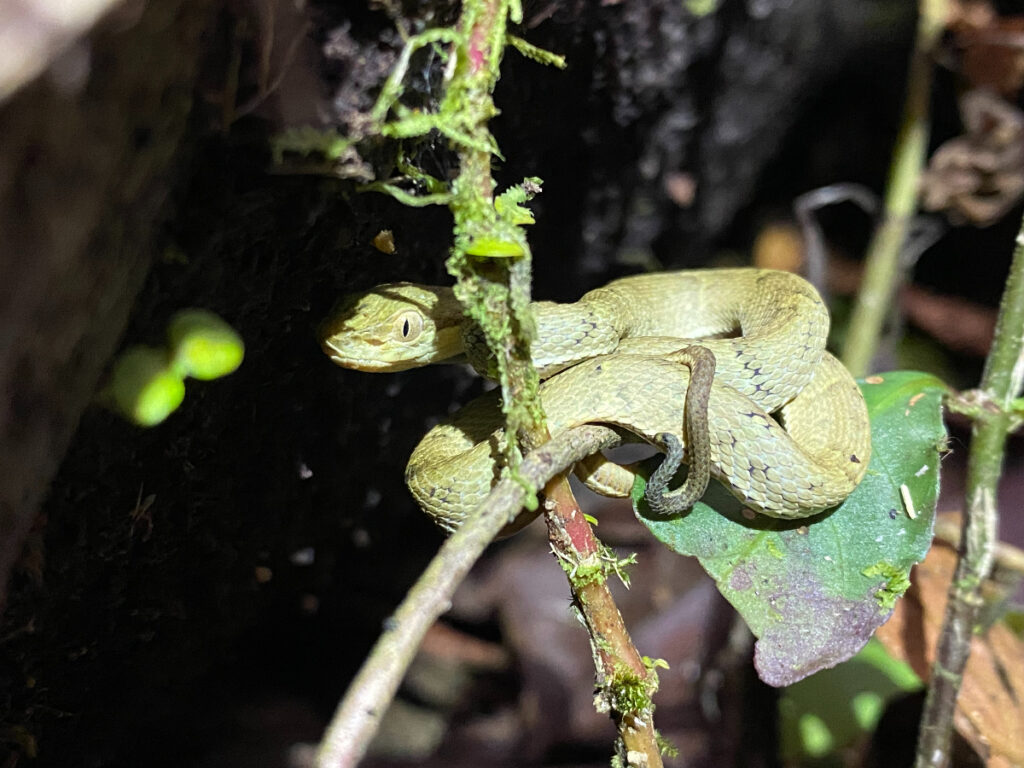
How does one begin to study some of our more elusive animals in the reserve, like fantastically camouflaged frogs and snakes? For example, the diminutive juvenile side-striped palm pit viper (Bothriechis lateralis) in the photo above is only about 10cm long (4 inches). It’s historically a difficult topic to study, which is why herpetofauna are some of the most understudied animals in Costa Rica. It requires going out on surveys at night, knowledge of what to look for and where, as well as superb eyesight in order to actually spot the tiny creatures. Not to mention, once you are lucky enough to actually find a frog, snake, salamander, etc., you then have to be able to identify it. Quite a daunting endeavor – so how is it done?
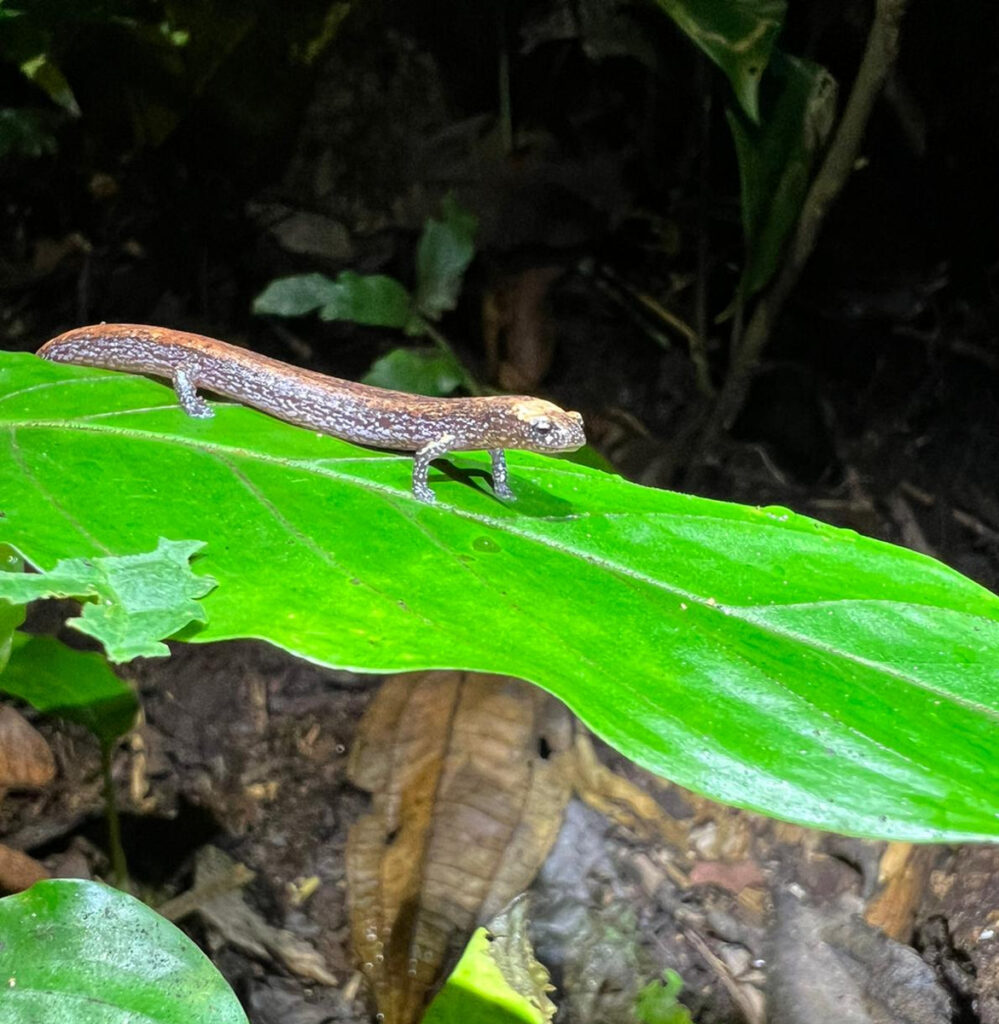
One way to get around the task of having to physically spot reptiles and amphibians with your eyes is to use a method called pitfall traps. What this means is that within a study site, there is a tarp that’s put up-right in the ground (so it’s standing up and not laying flat), that runs anywhere between 10-25 meters, and has buckets dug into the ground on either end of the tarp. The idea with pitfall traps is that when an animal encounters the tarp (let’s say a frog), it will run alongside the tarp, and eventually fall into the bucket. From there, it’s much easier to see and identify the desired specimens as they can all be gathered into a specific site. It’s important to note that for a setup like this, it’s essential that the researcher checks the traps 1-2 times per day to limit any potential mortality of animals being in the buckets.
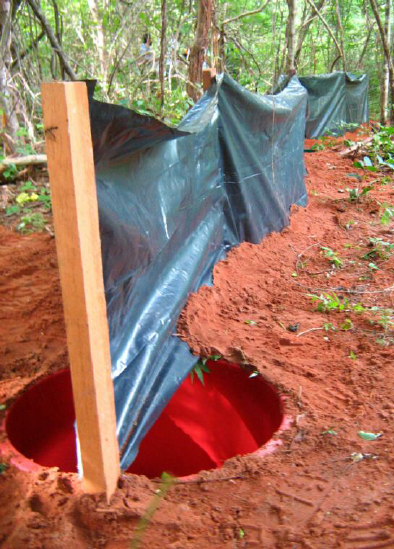
Some believe that pitfall traps perhaps aren’t worth the trouble to set up, but that didn’t discourage Cloudbridge researcher Reed Ebbinghaus who was running his pitfall trap project for about two months in the year 2022 throughout our cloudforest. After much preparation and building the pitfall traps, Reed set out to discover diversity trends of herpetofauna throughout the reserve according to habitat type of the forest. He wanted to know if there was a difference in diversity levels in more or less disturbed areas.
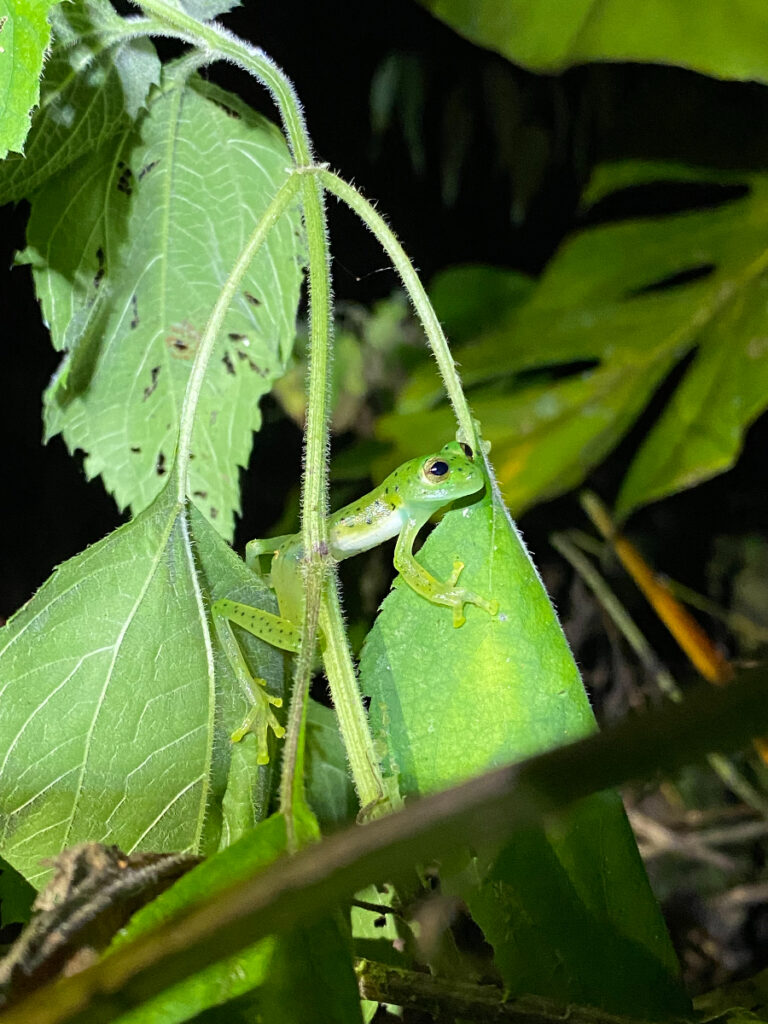
To do this, Reed would go into the field two times a day, checking his pitfall traps, and would record how many species he saw and what species they were. The traps were placed in two different forest types (secondary versus primary) which allowed him to compare if there was a difference in species evenness per habitat in the end. Perhaps to no surprise, old growth forests had the tendency to be more species rich and demonstrated more species evenness. To learn more about what Reed’s results concluded, you can read his paper here.
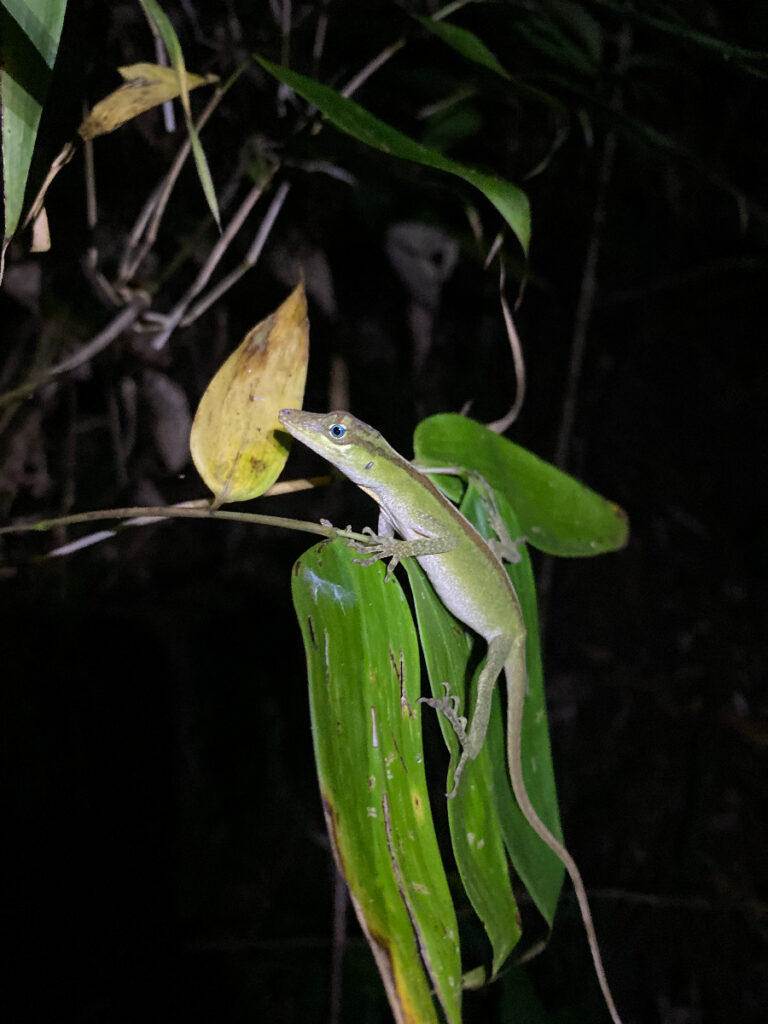
Additional Suggested Reading:
- Still not quite sure how a pitfall trap works? You can read more about it here, as in arid locations like Southern California it’s easy to set up and maintain a pitfall trap due to the lack of rain. These can be highly effective if done correctly to monitor the herpetofauna in an area that might otherwise be difficult to survey.
- Vegetation and understory density within a forest can vary wildly from older forests to younger forests. It’s important to understand it’s effects and differences, because the more we know, the better we can conserve their habitats for the future.
- Whoa, is that second photo a worm with legs? It’s actually a salamander, one of the more rare amphibians (yes, amphibians!) found in Costa Rica. These elusive animals are closely related to frogs, even though they look distinctly different. To learn more about the species they have throughout the country, you can find a nice species list here.
